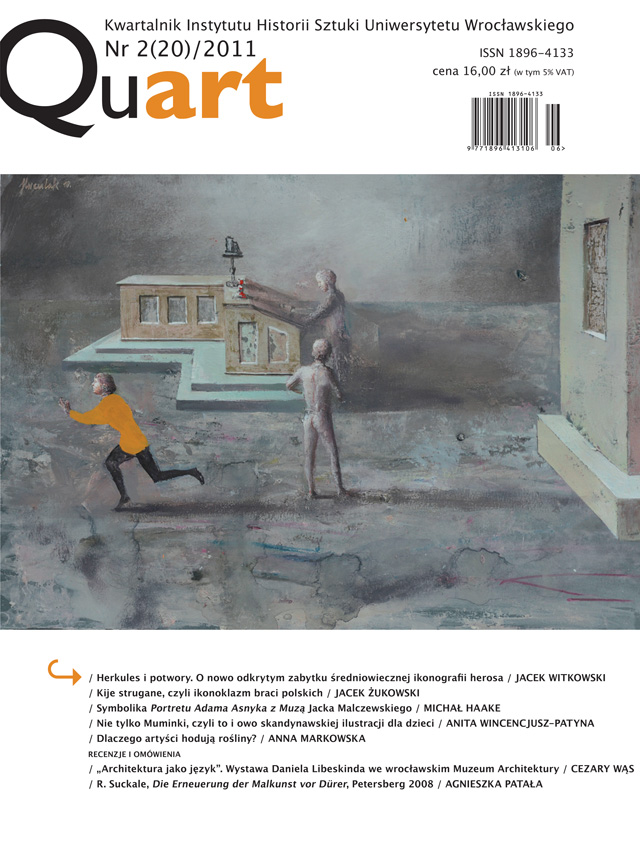Dlaczego artyści hodują rośliny?
Why do artists grow plants?
Author(s): Anna MarkowskaSubject(s): Fine Arts / Performing Arts, Sociology of Art, History of Art
Published by: Wydawnictwo Uniwersytetu Wrocławskiego
Summary/Abstract: Why do artists raise plants? is an attempt to reconstruct main discourses in which plants have been inscribed in the most recent art history. As it comes to European art the basic change in approach to plants can be seen between Documenta 7, when Joseph Beuys commenced a great action of planting seven thousand of oak trees on a square in front of the Fredericianum Museum, and Documenta 12, when Sanja Ivekovič planted a vast Field of Poppies on a same square. Between planting oaks in 1982 and sowing poppies in 2007 a border is situated between idealisation of nature, the wish to come back to what once was a dream and nostalgia, and analysing nature as an element of culture (including drug business) deprived of innocence. On the other hand, across the Ocean, in New York MoMA, the year of 1936 comes as an important date, as well as the very exhibition of live plant hybrids delphiniums raised by Edward Steichen, what, for many researchers, make up the very beginning of bio-art. The next crucial date is the year of 2008 and a new exhibition at MoMA – Design and the Elastic Mind during which its curator, Paola Antonelli, was forced to... murder. The exhibited bio-art tissue cultures of a tiny living leather jacket by a duo Oron Catts&Ionat Zurr, designed to provoke to think over our clothing (so called victimless leather), grew unexpectedly and with no control. This way the former Steichen’s selection, designed to serve beauty, was deprived of its aesthetic alibi by the selection performed by Antonelli (which selection destroyed Oron Catts&Ionat Zurr’s work): the living tissue cultures were deleted not regarding their ugliness but in view of danger they had caused. Yet another border and taboo was taken over, giving way to discussion on hospitality, superstitions and an image of a man that appears when we give up an anthropocentric point of view. However, Polish art of the recent days most eagerly places plants in a discourse of legacy after modernism: from unpretentious flower beds by Julita Wójcik, to guerilla gardening from Opole and Warsaw, and a mockdocumentary film by Jarosław Kozakiewicz Nature of/for Living. Also a video Everything has already happened by Azorro group, in a humourous way relates to plant phobia of some of great masters of modernism. An escape from an orangery is a metaphor of modern art since Cubism. Today this escapism is analysed maliciously as something that eliminates otherness and discredits anything that has no right to speak up.
Journal: Quart
- Issue Year: 20/2011
- Issue No: 2
- Page Range: 86-102
- Page Count: 17
- Language: Polish

